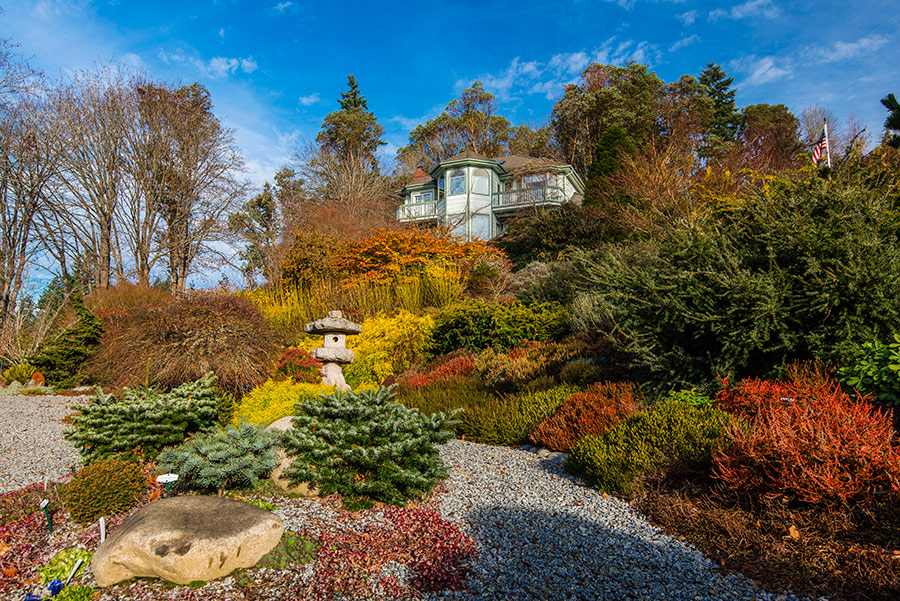
In the summer of 1998, John Albers, and his wife Santica Marcovina, both Research Professors of Medicine at the University of Washington, were touring the Olympic Peninsula and fell in love with a house overlooking the Port Washington Narrows in East Bremerton. Santica was attracted by the house nested on a hillside with a backdrop of a native Madrona and maple woodland while John’s major interest was in the two acres of lawn punctuated by old fruit trees remaining from the original orchard. The house was for sale, John and Santica immediately made an offer and after a few months moved from West Seattle to their new location. While Santica was busy in making the house their home, John, an avid gardener, started his plans of transforming the lawn into a garden. Taking advantage of the beautiful Southwest facing slope framed to the west by the Olympic Mountains, John laid out paths of granite steppingstones, without changing the topography, to define the distinct garden areas he had in mind. Different varieties of conifers were first planted in strategic locations to provide backbone and structure to the garden followed by a large variety of trees, shrubs, and perennials.
After a few years, while the botanical garden was taking shape, two more acres adjacent to the original property were acquired. The first arduous task was to remove the Himalayan blackberries and Scotch Broom that had invaded the property and replace them with native and non-native plants carefully selected to be adapted to the climate and soil conditions of the area with the goal to creating a sustainable landscape. To take advantage of the expansive view on the upper portion of the property, John installed a gazebo adjacent to a rose garden and built a patio with circular seating offering a view of Mount Rainier. With the intent of preserving a magnificent California Redwood, an adjacent property was purchased, landscaped, and annexed to the garden. More recently, a new facility was built within the middle part of the garden to serve as a library, a meeting facility, and a venue for horticultural classes.
In its present configuration, the gardens are formed by 15 distinct areas, containing over a thousand aesthetically arranged different plants providing four season color and interest with landscape art strategically located throughout.
